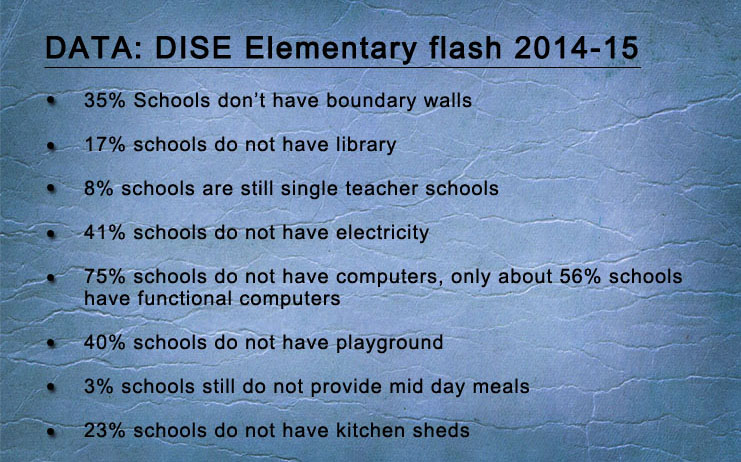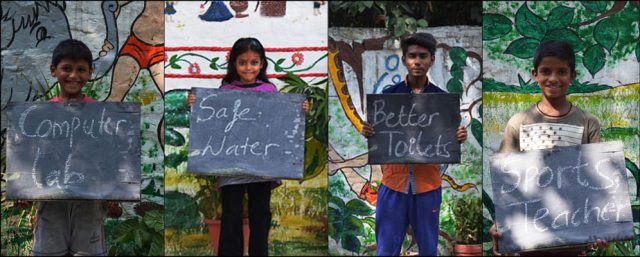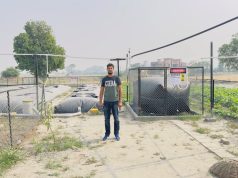How Important Is Investing In Educational Infrastructure?
While we talk quite passionately about Right to Education for every child, an important factor usually takes a backseat in the list of priorities. Requisite infrastructure and staff with adequate quality standards often lag behind in education system.
It was Universal Children’s Day on Sunday, November 20 and India too recently celebrated Indian Children’s Day on November 14 marking the birth anniversary of Jawaharlal Nehru. Various topics concerning children were discussed and tried to be worked upon during the celebrations.
Quality infrastructure and quality workforce have a huge impact on the learning outcomes and consequently the retention of children in schools. Factors like proper classrooms, benches, toilets, playgrounds, mid-day meals among many others lead to an impacting effect on admission and regular attendance of children in school.
“The Right to Free and Compulsory Education 2009, makes it mandatory to have a set of infrastructural arrangement in schools. However, six years post its implementation; these requirements have still not been met. Providing basic infrastructure like benches, safe drinking water, functional toilets and electricity continues to be a challenge,” said Soha Moitra, Regional Director, Child Rights & You (CRY).
Basic provisions like hygiene and sanitation of children is often taken for granted. According to figures, 11% of the schools in our country do not have toilets. More than two lakh schools do not have toilets for girls. In 34% of the schools, the toilets are either in unusable or extremely unstable conditions. About 49% of the schools don’t have hand-wash facilities near the toilets. (Elementary Education in India: Towards UEE-Flash Statistics, NUEPA & GoI, 2005-06 to 2015-16)
It has been a noted fact that teenage girls tend to drop out from schools due to lack of sanitation facilities. According to a Forbes Marshall survey, which looked at sanitation as a whole, almost 23% of girls drop out of school when they start menstruating. In some places, as many as 66% girls skip school during this time and one-third of them eventually drop out.
Additional details from the same source mention that around 3.2% of the schools do not have access to safe drinking water and almost 12% have their drinking water source outside the school premises. Only 24% of the schools have electricity and computer facilities leading to lack of basic amenities like lights and fans.
“Government schools often have broken staircases and benches leading injuries among children. Most times, teachers are not motivated to come to the dingy classrooms which further affect the education and attendance of children,” said Avisha Kulkarni, Founder, Desh Seva Samiti, a Mumbai-based non-profit organisation working in education, health and other social issues.
Kulkarni also works with municipal schools in Mumbai. She further added, “Unlike many private schools that lack space, municipal schools have big classrooms and playgrounds but they lack maintenances. Students love playing sports and games. This also attracts them to attend school regularly. Evident results can be seen if amenities are maintained appropriately.”

Presence of well-qualified and trained teachers is an utterly important need for the dream of educated India. According to Ministry of Human Resources Development, there is a shortage of 9.4 lakh teachers in government schools. Among the existing teachers in government schools, about 20% are untrained and the proportion of trained qualified teachers has been almost stagnant since last five years.
“We have still not been able to address the issue of huge teacher vacancy. Education is not simply a preparation for the future but an investment on our children in the present. It is therefore the duty of the government to not only plug all the gaps in the system but to also ensure that every child is able to exercise his fundamental right to free and quality education, thereby upholding the true spirit of the RTE act,” added Moitra.
Children from CRY intervention areas made a wish list for their school – in turn highlighting the infrastructure gaps ailing the education system.
It is not only about government schools. Many private schools also tend to have such infrastructural traits.
School infrastructure is an area where corporate houses can easily offer help. Many corporate houses are doing it too. In fact, education has been one of the sectors receiving the highest CSR funds. But a lot more is needed; not only in terms of money but also as involvement to enhance the quality of our educational system.
Thank you for reading the story until the very end. We appreciate the time you have given us. In addition, your thoughts and inputs will genuinely make a difference to us. Please do drop in a line and help us do better.
Regards,
The CSR Journal Team
While we talk quite passionately about Right to Education for every child, an important factor usually takes a backseat in the list of priorities. Requisite infrastructure and staff with adequate quality standards often lag behind in education system.
It was Universal Children’s Day on Sunday, November 20 and India too recently celebrated Indian Children’s Day on November 14 marking the birth anniversary of Jawaharlal Nehru. Various topics concerning children were discussed and tried to be worked upon during the celebrations.
Quality infrastructure and quality workforce have a huge impact on the learning outcomes and consequently the retention of children in schools. Factors like proper classrooms, benches, toilets, playgrounds, mid-day meals among many others lead to an impacting effect on admission and regular attendance of children in school.
“The Right to Free and Compulsory Education 2009, makes it mandatory to have a set of infrastructural arrangement in schools. However, six years post its implementation; these requirements have still not been met. Providing basic infrastructure like benches, safe drinking water, functional toilets and electricity continues to be a challenge,” said Soha Moitra, Regional Director, Child Rights & You (CRY).
Basic provisions like hygiene and sanitation of children is often taken for granted. According to figures, 11% of the schools in our country do not have toilets. More than two lakh schools do not have toilets for girls. In 34% of the schools, the toilets are either in unusable or extremely unstable conditions. About 49% of the schools don’t have hand-wash facilities near the toilets. (Elementary Education in India: Towards UEE-Flash Statistics, NUEPA & GoI, 2005-06 to 2015-16)
It has been a noted fact that teenage girls tend to drop out from schools due to lack of sanitation facilities. According to a Forbes Marshall survey, which looked at sanitation as a whole, almost 23% of girls drop out of school when they start menstruating. In some places, as many as 66% girls skip school during this time and one-third of them eventually drop out.
Additional details from the same source mention that around 3.2% of the schools do not have access to safe drinking water and almost 12% have their drinking water source outside the school premises. Only 24% of the schools have electricity and computer facilities leading to lack of basic amenities like lights and fans.
“Government schools often have broken staircases and benches leading injuries among children. Most times, teachers are not motivated to come to the dingy classrooms which further affect the education and attendance of children,” said Avisha Kulkarni, Founder, Desh Seva Samiti, a Mumbai-based non-profit organisation working in education, health and other social issues.
Kulkarni also works with municipal schools in Mumbai. She further added, “Unlike many private schools that lack space, municipal schools have big classrooms and playgrounds but they lack maintenances. Students love playing sports and games. This also attracts them to attend school regularly. Evident results can be seen if amenities are maintained appropriately.”
 Presence of well-qualified and trained teachers is an utterly important need for the dream of educated India. According to Ministry of Human Resources Development, there is a shortage of 9.4 lakh teachers in government schools. Among the existing teachers in government schools, about 20% are untrained and the proportion of trained qualified teachers has been almost stagnant since last five years.
Presence of well-qualified and trained teachers is an utterly important need for the dream of educated India. According to Ministry of Human Resources Development, there is a shortage of 9.4 lakh teachers in government schools. Among the existing teachers in government schools, about 20% are untrained and the proportion of trained qualified teachers has been almost stagnant since last five years.
“We have still not been able to address the issue of huge teacher vacancy. Education is not simply a preparation for the future but an investment on our children in the present. It is therefore the duty of the government to not only plug all the gaps in the system but to also ensure that every child is able to exercise his fundamental right to free and quality education, thereby upholding the true spirit of the RTE act,” added Moitra.
Children from CRY intervention areas made a wish list for their school – in turn highlighting the infrastructure gaps ailing the education system.
It is not only about government schools. Many private schools also tend to have such infrastructural traits.
School infrastructure is an area where corporate houses can easily offer help. Many corporate houses are doing it too. In fact, education has been one of the sectors receiving the highest CSR funds. But a lot more is needed; not only in terms of money but also as involvement to enhance the quality of our educational system.
Thank you for reading the story until the very end. We appreciate the time you have given us. In addition, your thoughts and inputs will genuinely make a difference to us. Please do drop in a line and help us do better.
Regards,
The CSR Journal Team













